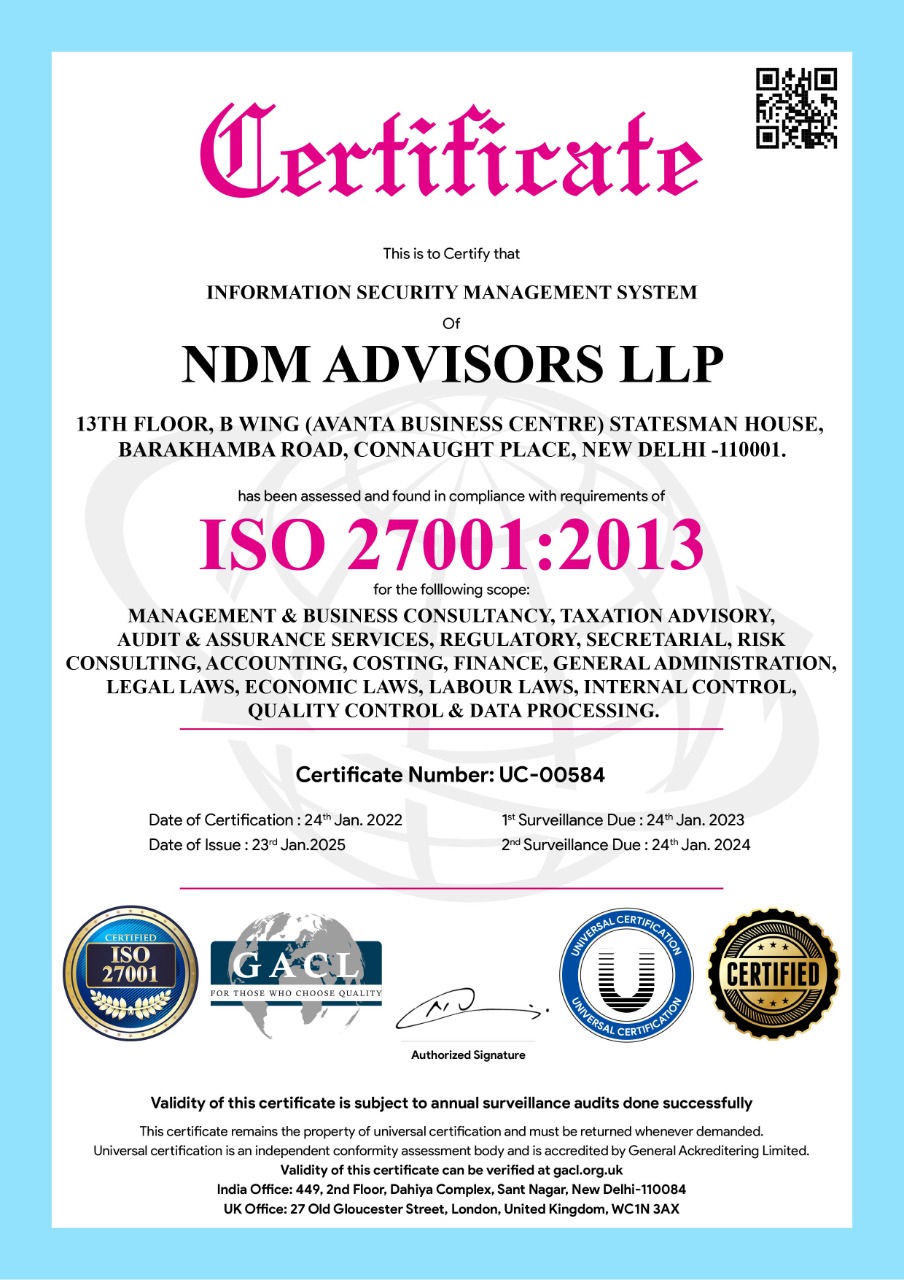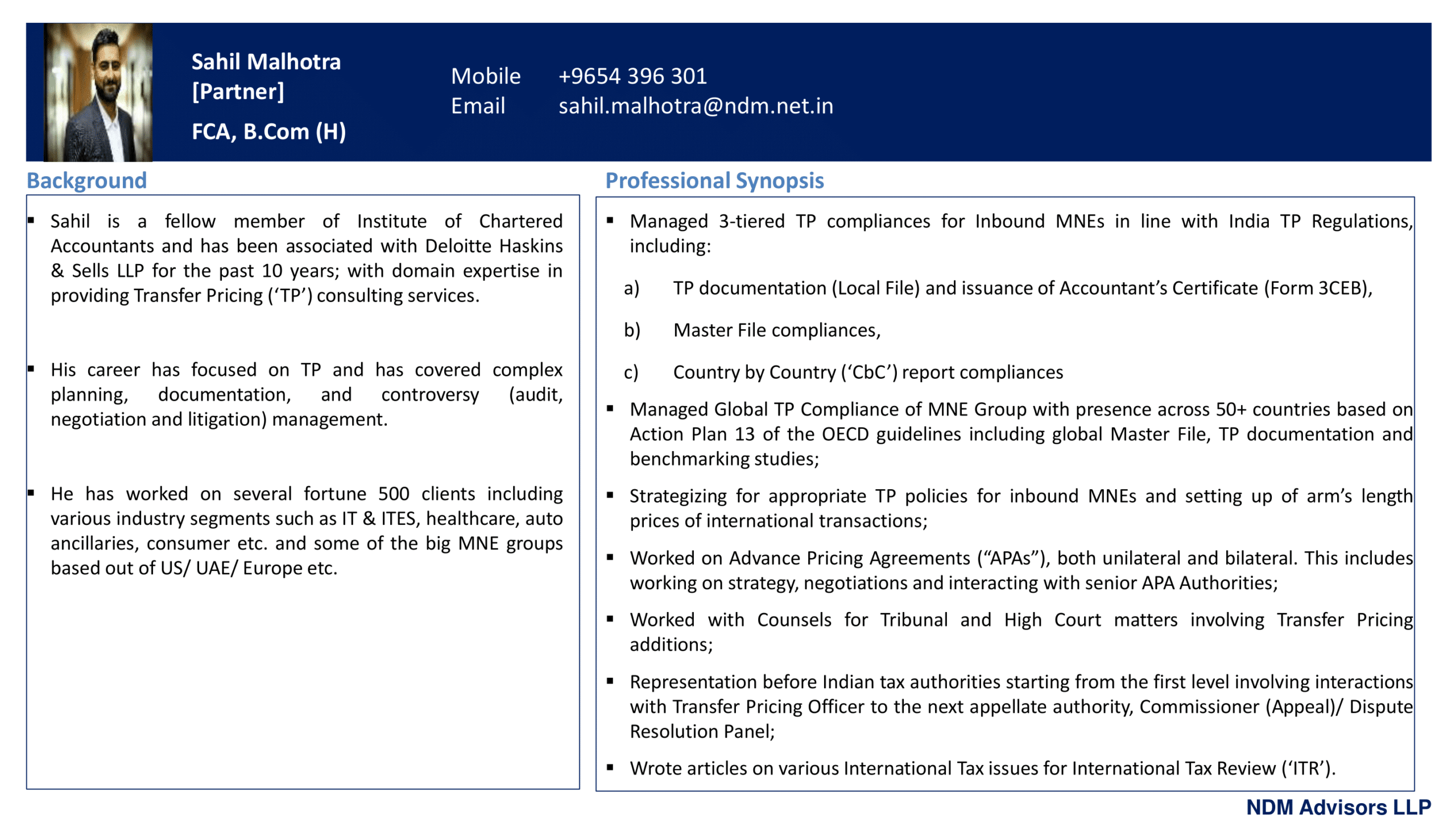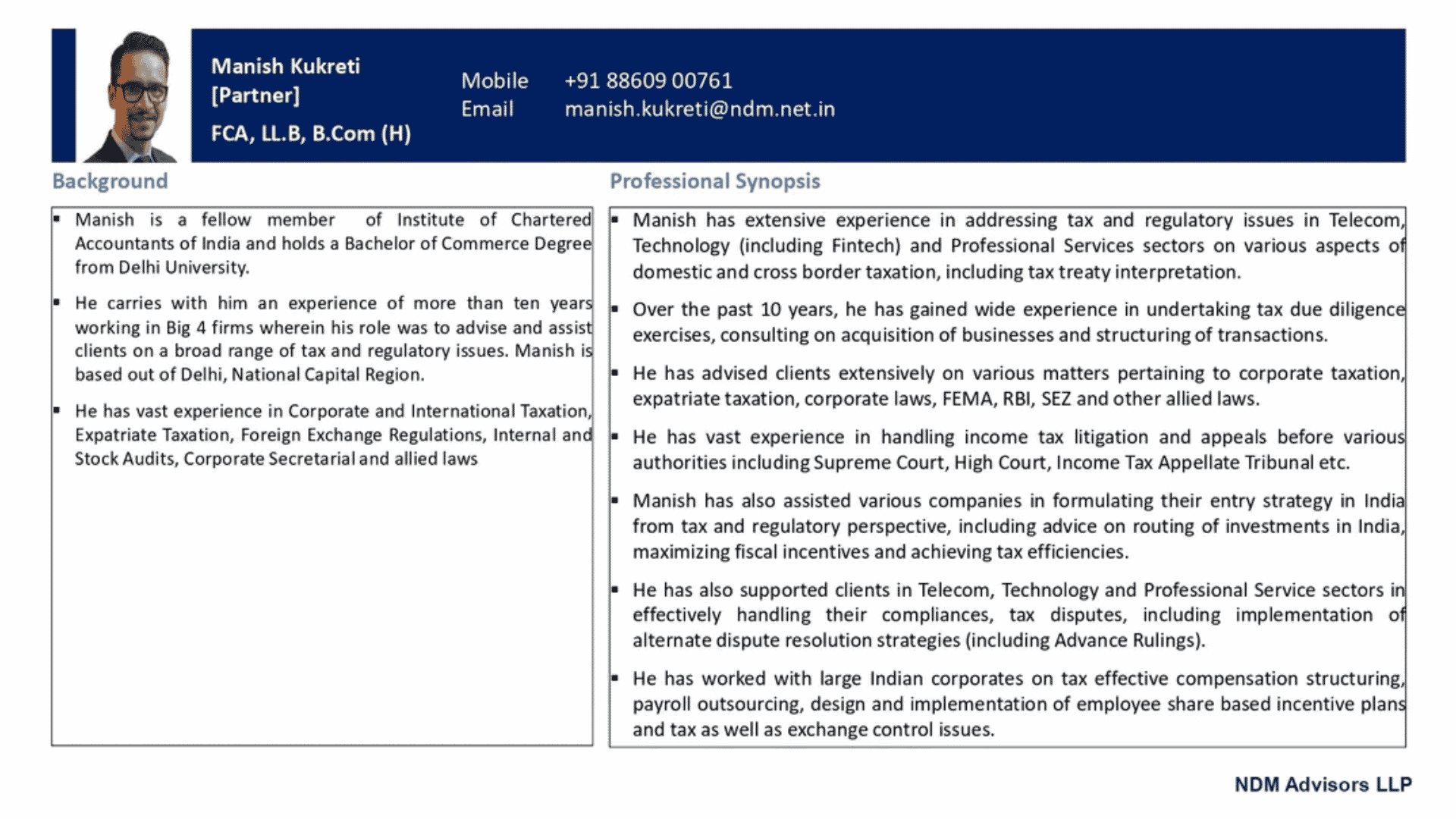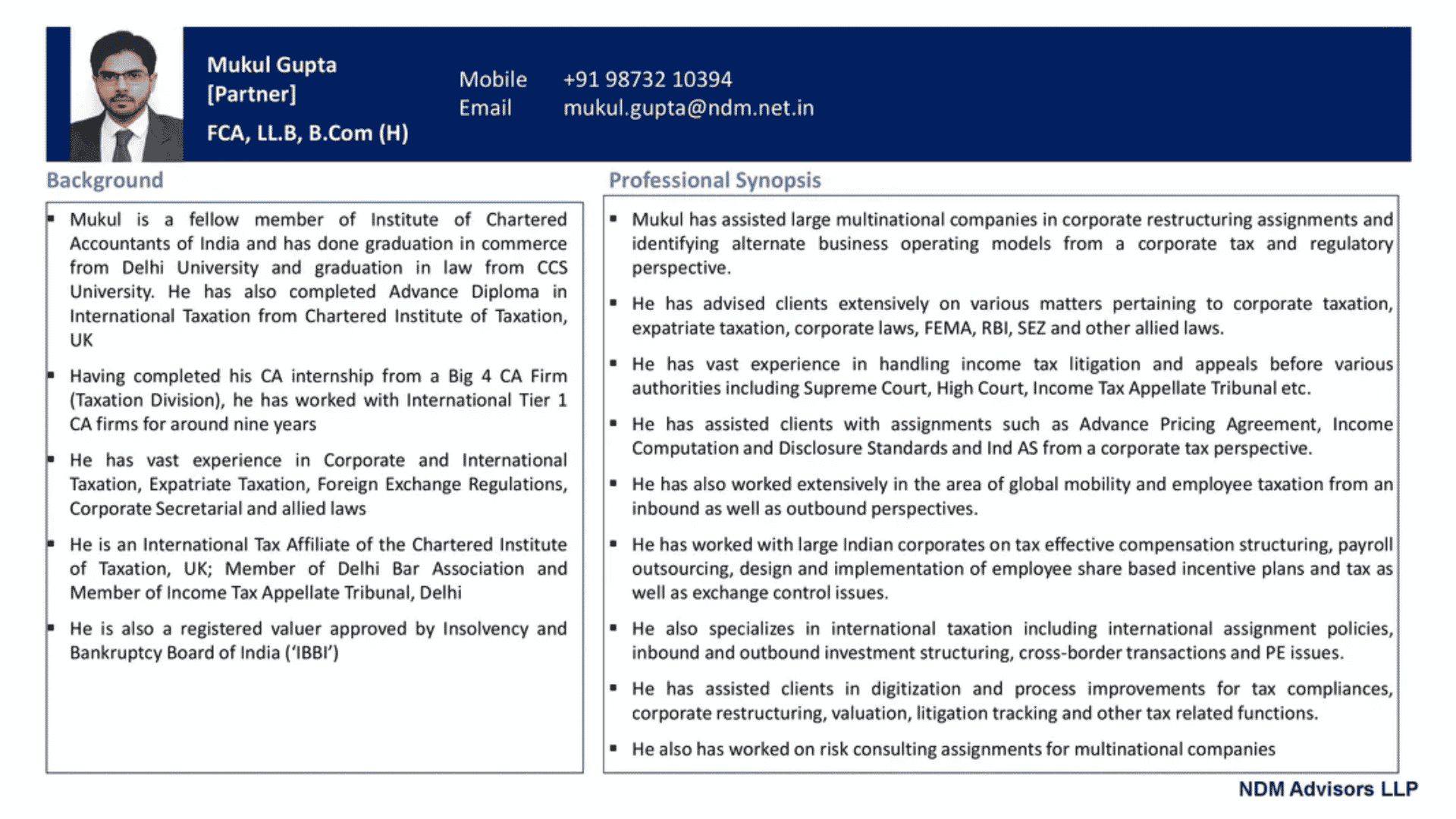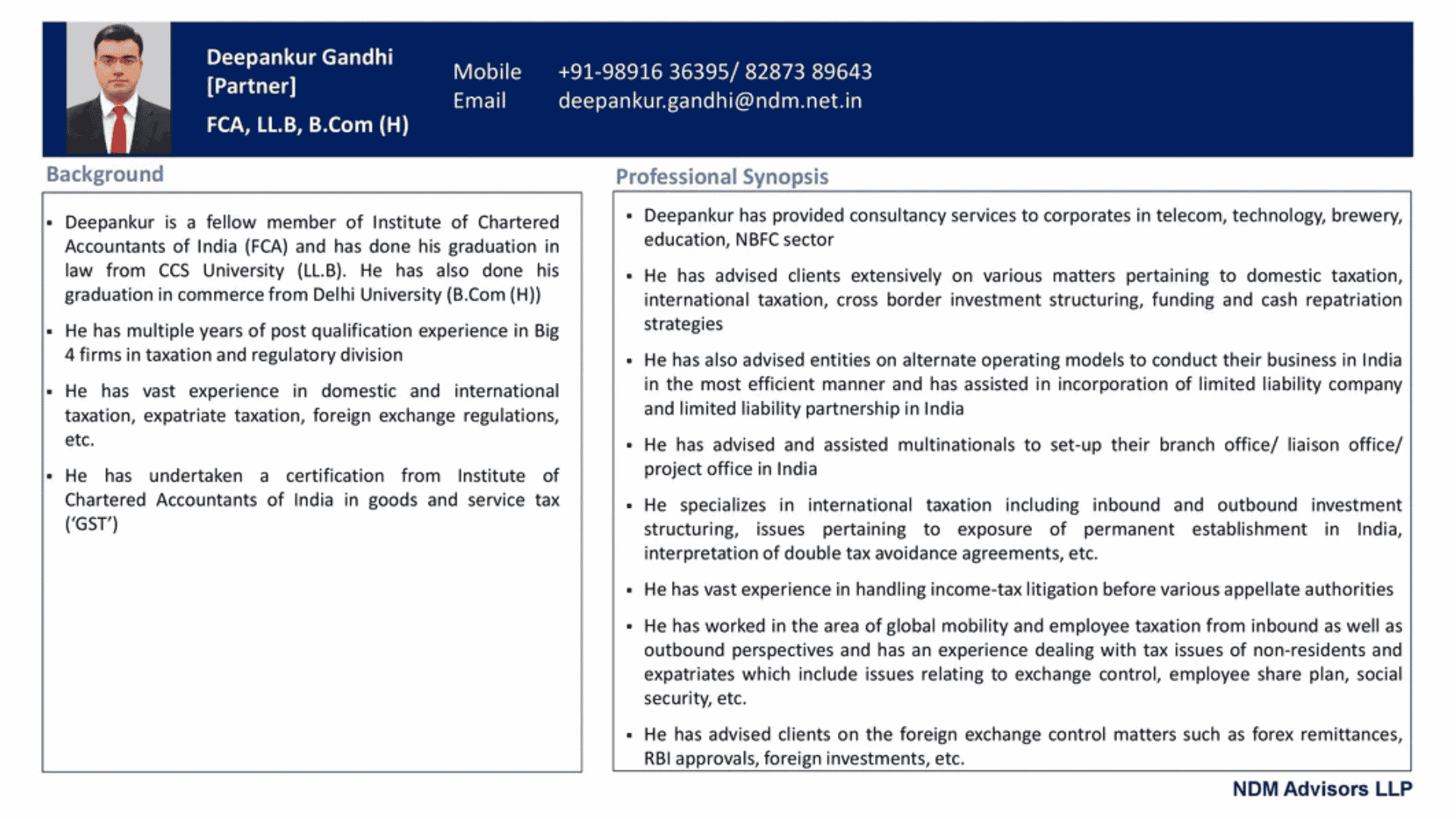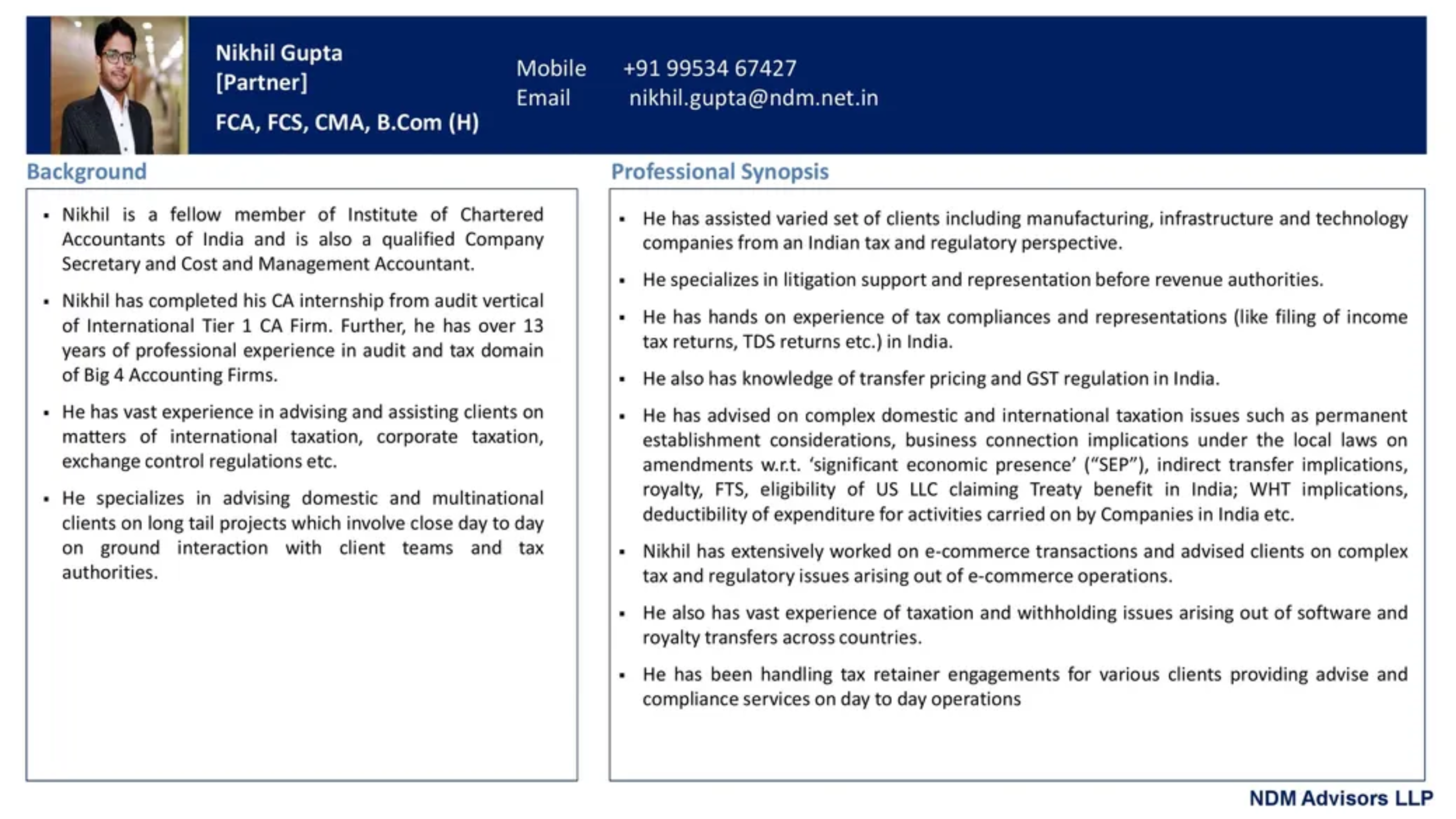Revised Income Tax (No 2) Bill Analysis 2025
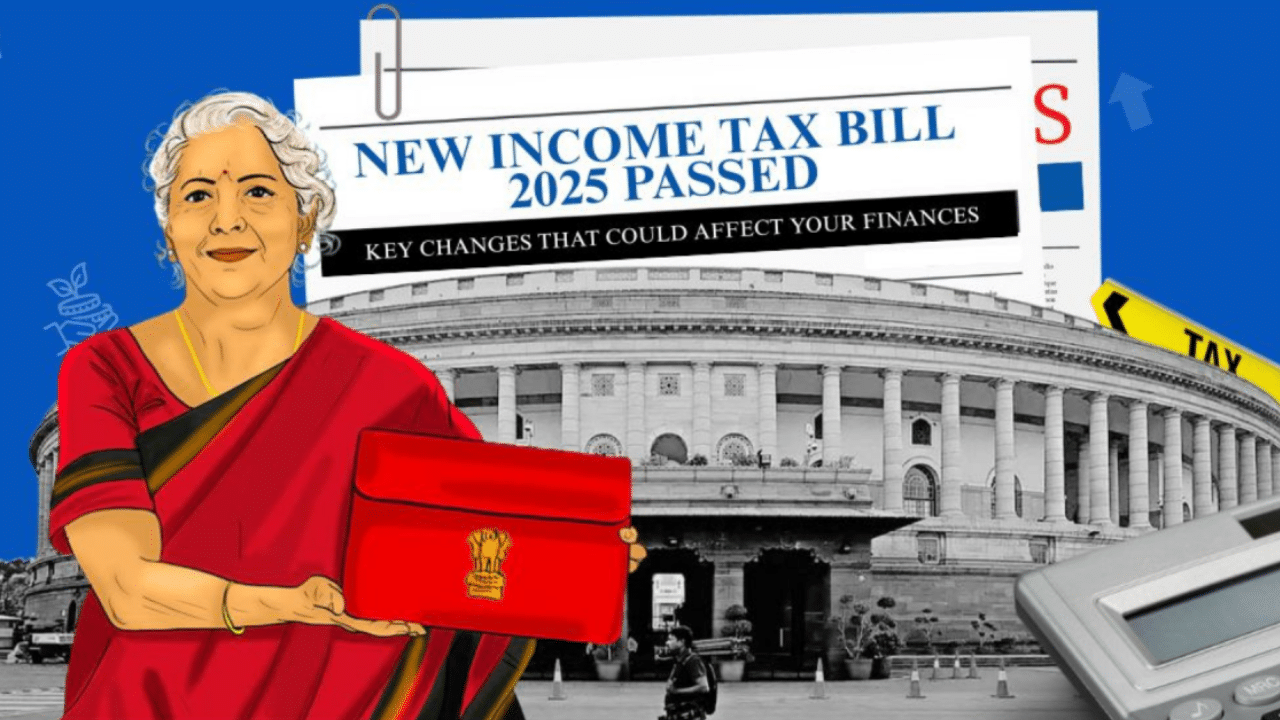
FOREWORD
The Income-Tax (No.2) Bill, 2025 was introduced in Lok Sabha on August 11, 2025. It seeks to replace the Income-Tax Act, 1961. This Bill has been brought in place of the Income-Tax Bill, 2025 introduced in February 2025. The earlier Bill was referred to a Select Committee of Lok Sabha and has subsequently been withdrawn. The Income-Tax (No.2) Bill, 2025 incorporates the recommendations of the Select Committee.
The Bill retains most of the provisions of the 1961 Act. It primarily aims to simplify the language and remove redundant provisions. Tax rates and regimes for individuals and corporations remain unchanged. Most definitions have been retained. There are no changes in offences and penalties. The Bill also retains the tax administration structure. The Bill proposes April 1, 2026 as the date of its commencement.
Background
The Income-tax Bill, 2025 (ITB 2025) was introduced in the Lok Sabha on 13 February 2025, with the objective of simplifying the complex language of the Income-tax Act, 1961 (ITA 1961) and removing redundant provisions, without altering existing policy. On the same day, a Parliamentary Select Committee (PSC) was constituted to examine the bill. The PSC submitted its comprehensive report on 16 July 2025, spanning over 4,500 pages, which included detailed recommendations and an amended version of the bill (referred to as the Amended ITB 2025). This was presented to the Lok Sabha on 21 July 2025.
The Government of India (GoI) broadly accepted the PSC’s recommendations, along with feedback from various stakeholders, in order to ensure accurate legislative interpretation. This led to the need for several adjustments such as drafting corrections, phrase alignment, consequential amendments, and proper cross-referencing. To avoid confusion from having multiple versions of the bill and to present a consolidated and updated draft, the GoI decided to withdraw the original ITB 2025 from the Lok Sabha.
Thereafter, a revised version of the bill the Revised ITB 2025 incorporating all necessary changes, was tabled in the Lok Sabha on 11 August 2025 and was passed on the same day. The Rajya Sabha approved the bill on 12 August 2025. The Revised ITB 2025 is now pending presidential assent, following which it will be enacted into law effective from 1 April 2026, thereby replacing the Income-tax Act, 1961.

1. Revised ITB 2025 amendments so as to align with ITA 1961
A. Capital gains
Incase of transfer of depreciable asset
The Income-tax Act, 1961 (ITA 1961) prescribes a specific method for computing capital gains arising from the transfer of depreciable assets. One of the permissible deductions under this computation is for expenses incurred “wholly and exclusively in connection with such transfer.
Both the original Income-tax Bill, 2025 (ITB 2025) and the Amended ITB 2025 had modified this language to allow deduction for expenses incurred “wholly and exclusively for such transfer. However, the Revised ITB 2025 has amended the provision to restore the original wording used in the ITA 1961.
Year of taxability on conversion of capital asset into stock in trade
Under ITA 1961, on conversion of capital asset into stock in trade, the full value of consideration is equal to fair market value of capital asset as on the date of conversion. However, the charge under the head capital gains is triggered in the year in which such capital asset is ‘sold or otherwise transferred’. Amended ITB carried language that capital gains charge is triggered in the year in which such capital asset is ‘sold or otherwise transferred by any other means’. Revised ITB 2025 amends the language to align with ITA 1961.
Taxability on contribution of capital asset by partner/member to firm/association of persons (AOP)/body of individuals (BOI)
Under the Income-tax Act, 1961 (ITA 1961), when a partner contributes a capital asset to a firm, or a member contributes such an asset to an Association of Persons (AOP) or Body of Individuals (BOI), it gives rise to capital gains in the hands of the partner or member in the tax year in which the transfer takes place. However, the provision does not explicitly state that such gains are taxable under the head Capital Gains. The Amended Income-tax Bill, 2025 (Amended ITB 2025) introduced a specific reference indicating that such gains are chargeable under the head Capital Gains. The Revised ITB 2025, however, removes this specific reference, thereby aligning the provision with the wording of the ITA 1961.
Bonds of NHAI and REC to qualify for capital gains reinvestment without need for notification
The Income-tax Act, 1961 (ITA 1961) provides a capital gains exemption for reinvestment in certain bonds, referred to as “long-term specified assets.” It defines such assets as bonds redeemable after five years, issued on or after 1 April 2018 by the National Highways Authority of India (NHAI), the Rural Electrification Corporation Ltd (REC), or any other bond notified by the Central Government (CG) in the Official Gazette for this purpose.
However, both the original and Amended versions of the Income-tax Bill, 2025 (ITB 2025 and Amended ITB 2025) revised this definition to include only those bonds redeemable after five years and specifically notified by the CG for the purposes of this section, subject to conditions (including potential limits on the amount a taxpayer may invest). This change implied that even bonds issued by NHAI or REC would require specific notification by the CG to qualify for the exemption.
The Revised ITB 2025 restores alignment with the ITA 1961 by explicitly including bonds issued by NHAI and REC in the definition, thereby exempting them from the requirement of separate CG notification to qualify for the capital gains exemption.
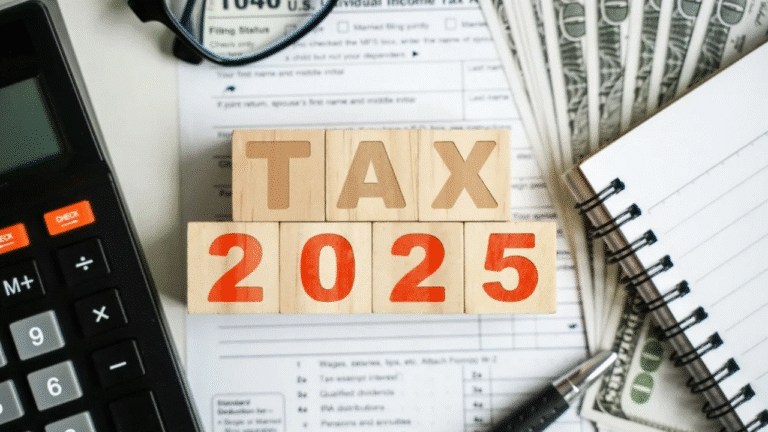
B. International taxation Rules
Rationalization of source rule for taxability in India:
Under the Income-tax Act, 1961 (ITA 1961), income arising from a business connection in India is deemed to accrue or arise in India, and only that portion of the income which is reasonably attributable to operations carried out in India is subject to tax.
The Income-tax Bill, 2025 (ITB 2025) had removed the word “reasonably”, raising concerns that this could grant excessive discretion to tax authorities, potentially leading to arbitrary attribution of income. Although the Ministry of Finance (MoF) initially defended this change before the Parliamentary Select Committee (PSC), it later agreed to restore the term in order to maintain consistency with the ITA 1961. The Revised ITB 2025 accordingly reinstates the word “reasonably”, thereby reaffirming the existing scope and well-established principles for attributing income under the current law.
Additionally, under ITA 1961, income from royalties or fees for technical services (FTS) paid by a resident is deemed to accrue or arise in India, unless the payment is made “in respect of any right, property or information used or services utilised for the purposes of a business or profession carried on outside India” or for earning income “from any source outside India.”
In contrast, ITB 2025 replaced the above phrase with a single word — “for” — which created ambiguity regarding whether the exemption applies broadly to all payments linked to foreign business activities or income sources, regardless of where the relevant rights, property, or services are actually used. The Revised ITB 2025 addresses this concern by restoring the original wording of the ITA 1961, thereby preserving clarity on the scope of the exemption.
Terms defined which in ITA 1961 which were undefined in the treaty
ITA 1961 contains specific provisions dealing with interplay of tax treaty entered into by India with other countries as per which any term which is not defined in a tax treaty (undefined term) but defined in ITA 1961 is to be understood as per the meaning of such term in ITA 1961 and any explanation, if any, given to it by the CG. However, the said provision does not specify the date from which such meaning needs to be applied in interpreting a treaty undefined term but defined in ITA 1961 (especially in cases where the corresponding definition under ITA 1961 was inserted much after the treaty came into force).
ITB 2025, while incorporating a similar provision, provided that the meaning of the term in ITA 1961 and any explanation given to it by the CG would apply retrospectively from the date the relevant treaty comes into force. In deference to the stakeholder representations, Revised ITB 2025 has now reinstated the provisions as existing in ITA 1961 by removing the reference to the effective date from which the meaning of the treaty undefined term but defined in the ITA 1961 will apply.
C. Procedural aspects
Central Board of Direct Taxes (CBDT) to prescribe transactions requiring permanent account number (PAN)
Under ITA 1961, a taxpayer is required to apply for PAN in specified circumstances. Further, in the interest of revenue, the CBDT is authorized to prescribe transactions undertaken by a taxpayer that would require mandatory application for PAN. While ITB 2025 replicated the existing provisions, it omitted the specific power of the CBDT to prescribe such transactions. Revised ITB 2025 reinstates this power, thereby aligning the provision with the existing provisions under ITA 1961.
Filing of return of income
Under the Income-tax Act, 1961 (ITA 1961), all taxpayers including companies, firms, individuals, and others are required to file a return of their own income or of any other person’s income for which they are assessable during the relevant tax year. The law also mandates filing of the return of income or loss on or before the prescribed due date, except where the taxpayer is not obligated to file a return due to their income being below the basic exemption threshold.
In contrast, the Income-tax Bill, 2025 (ITB 2025) limited the obligation to file a return on behalf of another person only to taxpayers other than companies or firms. This resulted in the inadvertent removal of provisions that enabled entities like companies and firms to file returns on behalf of other persons. Additionally, ITB 2025 omitted the explicit requirement for certain taxpayers including companies and firms to file a return of income or loss on or before the due date.
The Revised ITB 2025 addresses these issues by restoring the enabling provisions that allow all categories of taxpayers, including companies and firms, to file a return of their own income or the income of any other person for whom they are assessable. It also reinstates the requirement for filing a return whether reporting income or loss within the due date, in line with the existing framework under the ITA 1961.
Equating “tax year” references with “previous year” under ITA
As a significant step towards simplification, ITB 2025 proposes to replace the dual concept of “previous year” and “assessment year” with single concept of “tax year”. For instance, instead of previous year 2026-27 for which assessment year is 2027-28 under ITA 1961, it will be called as tax year 2026-27.
A specific provision is added to clarify that references in Revised ITB 2025 to tax year/s which commenced on or before 1 April 2025 shall be construed as reference to the corresponding “previous year” under ITA 1961. This provision ensures that Revised ITB 2025 provisions which rely or get impacted by tax provisions and parameters falling under ITA 1961 regime will be interpreted by equating reference to “tax year” as at par with corresponding “previous year”.
2. PSC’s Recommendations which are not present in the Revised ITB 2025
A. Computation of income
Clawback provisions on conversion in capital gains
Under ITA 1961, conversion of (i) a proprietary or a partnership firm into a company; or company into a Limited Liability Partnership (LLP) is tax neutral subject to satisfaction of a certain specified conditions. Violation of the specified conditions results in the capital gains tax foregone on conversion arising in the year of breach. In this regard, Amended ITB 2025 sought to consider such capital gains tax as arising retrospectively in the year in which the conversion took place which could have resulted in deviation from ITA 1961. Revised ITB 2025 now reinstates the position under ITA 1961 and provides for capital gains tax to arise in the year in which conditions are not complied with.
Consistency in Beneficial Owner vs. Beneficially Held for Set Off of losses
Under the Income Tax Act (ITA) 1961, the set-off and carry forward of losses are prohibited if there is a change in the shareholding of a closely held company exceeding 49% when comparing the shareholding on the last day of the tax year in which the loss was incurred to the shareholding on the last day of the tax year in which the loss is sought to be set off.
The Income Tax Board (ITB) 2025 introduced a restriction on loss set-off based on a change in the “beneficial owners” of shares exceeding 49%, replacing the term “beneficially held” used in ITA 1961 with “beneficial owner.” Due to ambiguity around the term “beneficial owner,” the Amended ITB 2025 defined it as an individual who derives direct or indirect benefits from the shares. According to the PSC Report, this definition aimed to align the interpretation with the term “beneficially held” in ITA 1961. However, the introduction of “beneficial owner” led to several interpretational ambiguities.
The Revised ITB 2025 has reverted the term “beneficial owner” back to “beneficially held,” thereby restoring the language consistent with ITA 1961 and eliminating confusion around the term “beneficial owner.” Nonetheless, existing disputes over the interpretation of “beneficially held” remain, due to varying judicial rulings.
Additionally, the PSC had recommended an amendment to permit the carry forward and set off of losses in cases where the shareholding pattern of a closely held company, although temporarily altered beyond 51%, is subsequently restored in later years. This recommendation was beneficial for taxpayers compared to the current provisions under ITA 1961. However, neither the Amended ITB 2025 nor the Revised ITB 2025 incorporated this recommendation.
B. TDS/TCS
TDS on benefits/perquisite from business/profession
ITA 1961 requires a person to deduct taxes at the rate of 10% on payment of benefit or perquisite wholly or partly in cash/kind arising from business/profession. ITB 2025 also contained parallel provision. PSC recommended to clarify that such TDS would also apply even in cases where benefit or perquisite is paid through modes of payment other than cash, such as cheque/ demand draft/bank draft etc. However, Amended ITB 2025 as well as Revised ITB 2025, does not incorporate this recommendation.
3. The PSC suggestions, which were accepted by the Ministry of Finance but inadvertently omitted from the Amended ITB 2025, have now been incorporated in the Revised ITB 2025
A. Computation of income
Standard deduction on house property income
ITA 1961 allows the taxpayer to claim a standard deduction of 30% of house property income, post deduction of property taxes (including services taxes). In contrast, ITB 2025 inadvertently permitted higher standard deduction claim at 30% of gross income (before property tax deduction). In this respect, while the PSC had recommended restoration of the computation of standard deduction as per ITA 1961 after deduction of property taxes, the text of change appearing in the Amended ITB 2025 appeared to inadvertently refer to allowing the standard deduction before deduction of property taxes. Revised ITB 2025 has aligned 30% standard deduction with ITA 1961 in line with the PSC recommendation by providing that the deduction shall be allowed from net income after deduction of property tax.
Reduction of subsidy amount received from actual cost of asset
Under ITA 1961, any portion of the actual cost of an asset acquired by the taxpayer, that has been met directly or indirectly by the government/authority in the form of a subsidy, is excluded from the actual cost of such asset. Further, where such subsidy is not directly relatable to an asset, such subsidy is pro-rated amongst all the assets in respect of or with reference to which the subsidy is so received, to be excluded from the actual cost of such assets (pro-rata formula).
ITB 2025 also contained similar provision but the reference to “directly or indirectly” was missing. PSC recommended that the phrase “directly or indirectly” be added in the main
provision as also in the pro-rata formula for better clarity, and to preserve the original intent while
simplifying the text. Revised ITB 2025 provides that “any subsidy relatable to the acquisition of an asset, received, directly or indirectly, by the taxpayer from the government/authority” shall be reduced from the actual cost along with pro-rata formula.
While ITA 1961 refers to subsidy having both direct or indirect nexus with acquisition of an asset
(it says ‘met directly or indirectly by government’), Revised ITB 2025 appears to cover subsidy which has direct nexus with acquisition of an asset while such subsidy may be received directly or indirectly from the government. This change creates a slight deviation from ITA 1961 resulting in ambiguity.
Foreign currency conversion rule restoration for tax withholding
ITA 1961 includes a provision enabling prescription of Rule for determining the applicable conversion rate in a case where salary is payable in foreign currency so as to compute the amount on which taxes have to be deducted at source. There was no corresponding provision in ITB 2025. Revised ITB 2025 incorporates this provision to align with ITA 1961.
Provisions regarding Alternate Minimum Tax (AMT)/Minimum Alternate Tax (MAT)
Revised ITB 2025 incorporates several suggestions made by PSC in relation to AMT/MAT provisions which were left out in Amended ITB 2025. Notably, provision clarifying non-applicability of AMT to firms/LLPs not claiming specified deductions is inserted.
B. TDS/TCS
Disallowance of expenses in case of tax deduction at source (TDS) compliance defaults
ITA 1961 mandates a disallowance of 100% of the amount payable to a non-resident (NR) (and 30% if payable to a resident) in cases of default in TDS compliance under two scenarios:
• Scenario A: TDS is not deducted during the tax year in which the expense is incurred.
• Scenario B: TDS is deducted during the tax year when the expense is incurred but not paid before the due date for filing the tax return.
However, the deduction of such expenses is allowed in subsequent tax years once TDS compliance is rectified.
ITB 2025 stipulated that if TDS is deducted and paid in any subsequent tax year, the expense deduction will be permitted in the year of TDS payment. It, however, did not address Scenario B, where TDS is deducted in the year the expense is incurred but paid after the return filing due date, potentially leading to permanent disallowance of those expenses.
To address this gap, Amended ITB 2025 explicitly included Scenario B, allowing expense deductions in the year the TDS payment is made when TDS is deducted on time but paid late. Unfortunately, this provision was inadvertently applied only to payments made to residents, excluding non-residents.
The Revised ITB 2025 has now extended this amendment to cover payments made to non-residents as well, thereby fully aligning the provisions with ITA 1961.
TDS rates Missing notes now included
In some cases notes relating to TDS were missing in the ITB 2025. While PSC recommended insertion of the missing notes, they were missing in the text of the Amended ITB 2025. Revised ITB 2025 incorporates such missing notes along with corresponding cross-referencing in penalty and prosecution provisions pertaining to TDS/TCS default.
TCS exemption on LRS remittance for education purpose
Revised ITB 2025 includes provision to exempt Liberalised Remittance Scheme (LRS) remittances for the purposes of education out of a loan obtained from specified financial institutions from levy of tax collection at source (TCS) in line with similar provisions under ITA 1961. This was inadvertently missed in ITB 2025.
C. Procedural aspects
Relaxation from tax audit to NRs falling under presumptive tax regime providing services to electronic manufacturing business in India
Under ITA 1961, the Finance Act 2025 introduced a new presumptive taxation regime for non-residents (NRs) providing services or technology to resident companies engaged in electronic manufacturing. This regime deems 25% of the amounts paid or received by the NR for such services or technology as business income attributable to the specified activity. However, unlike similar presumptive taxation provisions for NRs in other sectors, this regime does not provide an exemption from the requirement of tax audit.
The ITB 2025 included a similar provision consistent with ITA 1961. The PSC recommended amending the language to exempt these NRs from tax audit compliance, noting that they are not allowed to declare a lower income by maintaining books and therefore should be relieved from audit obligations. Despite this recommendation, the Amended ITB 2025 did not adopt the exemption.
The Revised ITB 2025 now incorporates the PSC’s recommendation, exempting NR taxpayers subject to this presumptive tax regime from tax audit compliance. This change offers much-needed relief to such NR taxpayers.
D. Charity taxation
Taxation of Non-Profit Organisation
The definition of regular income, which under ITB 2025 provided for taxation on a gross receipt basis, has been modified in the Revised ITB 2025 to reinstate the term “income” as originally used in ITA 1961.
The definition of anonymous donation (AD) has been amended to exempt ADs received by registered NPOs with mixed objects (both religious and charitable) from taxation, except when such
donations are specifically directed towards educational or medical institutions operated by the NPO, aligning this provision with ITA 1961.
An error in the Amended ITB 2025 caused an overlap between provisions intended for non-General Public Utility (GPU) registered NPOs engaged in commercial activities and another provision meant
for GPU-registered NPOs. The Revised ITB 2025 corrects this inadvertent mistake, bringing the provisions in line with ITA 1961.
Additionally, the Revised ITB 2025 rectifies certain clear errors in the referencing within Schedule XVI, which lists permitted investments by registered NPOs.
4. Additional amendments introduced for the first time in the Revised ITB 2025, deviating from the provisions of ITA 1961.
A. Capital gains Provisions
Exclusion from the charging provision for exemptions related to reinvestment in specific bonds
Under ITA 1961 and ITB 2025, the charging section of capital gains provides that profits or gains arising from transfer of capital asset is chargeable under the head capital gains however it specifically provides an exclusion for various exemption. However, reference to exemption provision dealing with reinvestment in certain bonds does not exist resulting in drafting lacuna. Revised ITB 2025 addresses this lacuna by specifically including the reference to this exemption provision.
Cost of acquisition to firm when capital assets is transferred by Partner
Under ITA 1961 and ITB 2025, a firm is subject to capital gains tax if a partner receives any capital asset or money from the firm. In such cases, the amount charged to capital gains is allowed as the cost of the other assets remaining with the firm. The Revised ITB 2025, by including the phrase “in addition to deductions under sub-section (1),” clarifies that this amount charged to capital gains will be allowed as cost over and above the components covered under sub-section (1), namely the cost of acquisition, cost of improvement, and expenses incurred in connection with the transfer.
Capital losses Set off
Under the ITA 1961 and ITB 2025, a taxpayer can set off losses under the head ‘income from capital gains’ only against capital gains income. But both ITA 1961 and ITB 2025 provide for a condition that the income against which such loss can be set off should be arrived at under a “similar computation”.
This phrase led to a controversy as to whether the set-off of losses under capital gains head is allowed only against income computed under similar mechanism and may not apply when different computational provisions are applied for determining capital gains (e.g. indexation benefit, depreciable assets, slump sale etc). Revised ITB 2025 now deletes such phrase thereby potentially resulting in reduced litigation on this aspect.
B. Computation of Total income Aspects
Change from “Persons” to “Person” in set-off and carry forward of losses provisions.
Under the ITA 1961, set-off and carry-forward of losses are not permitted for a closely held company unless, on the last day of the relevant tax year, shares carrying at least 51% of the voting power of the company are beneficially held by the same persons who held such shares in the year in which the loss was incurred. However, the Revised ITB 2025 replaces the plural term “persons” with the singular term “the person.” This change introduces ambiguity regarding the applicability of this provision in cases of inter-se transfer of shares within the same shareholder group, where the group collectively continues to hold 51% voting power, but the individual shareholder holding a controlling stake of 51% or more ceases to maintain that controlling interest.
Section 13(2) of the General Clauses Act, 1897, provides that words in the singular shall include the plural, and vice versa, unless the context or subject matter clearly indicates otherwise. Furthermore, the Government of India and the Parliamentary Standing Committee have explicitly expressed an intent to maintain continuity of policy between ITA 1961 and Revised ITB 2025.
Nevertheless, the change in wording in the Revised ITB 2025, as compared to ITA 1961, could potentially give rise to litigation due to the ambiguity created.
Definition of relative for exemption
Under ITA 1961, gift received from relative is not chargeable to tax. The definition of “relative” under ITA 1961 covers lineal ascendants and lineal descendants of individual and spouse of the individual. In order to provide clarity, Revised lTB 2025 provides that lineal ascendant, maternal as well as paternal, of individual or spouse will be covered within definition of “relative”. Unlike ITB 2025 or Amended ITB 2025, Revised ITB 2025 does not provide reference to maternal or paternal in the context of lineal descendant.
C. Procedural aspects
Representative assessee
ITA 1961 provides for instances where a person in India can be treated as agent of NR taxpayer. This provision is relevant for the purpose of assessment and recovery of tax of NR from its agent in India. The provision, inter-alia, states an agent of NR includes a person in India who has business connection with NR. For this purpose, under ITA 1961 as well as amended ITB 2025, business connection covered only agency business connection.
Revised ITB 2025 amends the scope of business connection for this provision to cover all forms of business connection including significant economic presence (SEP). However, it must be noted that the definition of agent, under a separate limb, continues to include a person in India from or through whom the NR is in receipt of any income, whether directly or indirectly.
Time limit Extension for CBDT to issue guidelines for block assessment of transfer pricing (TP)
The assessment of the arm’s length price (ALP) determined by taxpayers in relation to international transactions or specified domestic transactions (SDT) is currently conducted through a specific reference by the assessing officer (AO) to the transfer pricing officer (TPO) for each tax year.
Following the amendment introduced by the Finance Act 2025, the ITA 1961 now provides an elective scheme under which taxpayers may opt to have their transfer pricing assessments carried out for a block period of three years. This option must be exercised by the taxpayer within a prescribed time frame and in the prescribed manner. Once the option is declared valid, the ALP determined for the first year of the block period will be applied to the subsequent two consecutive tax years for the same or similar transactions.
Additionally, under ITA 1961, the Central Board of Direct Taxes (CBDT) is empowered to issue guidelines—subject to the approval of the Central Government and presentation before both Houses of Parliament—to address any difficulties that may arise in implementing this elective scheme. However, such guidelines can only be issued until 31 March 2028.
The Revised ITB 2025 contains a parallel provision incorporating the elective scheme but notably removes the sunset clause for the issuance of guidelines to resolve difficulties in implementing the scheme. This change allows the CBDT to issue guidelines to address such difficulties on a perpetual basis.
Avoidance of repetitive appeals where appeal before High Court (HC)/ Supreme Court (SC) was filed under ITA 1961
Both ITA 1961 and ITB 2025 contain specific provisions for avoiding repeated appeals on the same question of law already in dispute before a HC or SC. However, in this respect, under ITB 2025, such provision applied only to cases where the appeal before the HC/SC was filed under the ITB 2025 (thus perhaps inadvertently leaving out cases where the appeal was filed under the comparative provision of ITA 1961). Revised ITB 2025 addresses this by incorporating specific reference to appeals filed under ITA 1961.
Information maintained in electronic form presumed to be true for the purpose of prosecution proceedings
Under both the ITA 1961 and ITB 2025, in a case where money, bullion, jewellery, virtual digital assets, or other valuable items (collectively referred to as “specified assets”), books of account, documents (collectively referred to as evidence), are found in a person’s control or possession in the course of search proceedings (including for the purpose of prosecution proceedings) , then it is presumed that:
Such evidence is true, and any signatures/handwriting therein belongs to the person having control or possession over the evidence. Such assets or evidence belongs to the searched person in whose possession they were found; and In the Revised ITB 2025, the above presumption is extended in prosecution cases to include information controlled and possessed by a person in electronic form and information on a computer system controlled and possessed by the searched person.
Taxability of Tainted Investment
Under the ITA 1961, any investment held in impermissible modes was taxable as specified income at a rate of 30% in the year following the completion of a one-year cooling period. The taxation applied only to the extent of the amount of the impermissible deposit or investment.
Under ITA 1961, it was arguable that this provision covered both voluntary deposits or investments made in impermissible modes, as well as those received by way of donation and held by registered NPOs beyond the one-year cooling period. However, the Amended ITB 2025 created ambiguity by proposing that impermissible deposits or investments be taxed in the year in which they were made, while simultaneously retaining the one-year cooling period for holding such deposits or investments.
The Revised ITB 2025 clarifies this by maintaining that the year of taxability for impermissible deposits or investments is the year in which the deposit or investment is made. Additionally, it introduces a new provision taxing the fair market value of any asset not held in permissible forms or modes as specified income in the year following the expiry of the one-year cooling period.
The intent behind the amendment in Revised ITB 2025 appears to distinguish between the year of taxability for voluntary deposits or investments in impermissible modes and the year of taxability for impermissible deposits or investments received by way of donation. The benefit of the one-year cooling period is made available only in the latter case.
D. Rationalization of transitional provisions
The ITB 2025 explicitly provided for the continuation of all directions, instructions, notifications, orders, or rules issued under the ITA 1961, as long as they do not conflict with the provisions of ITB 2025. The amended ITB 2025 further clarified that Circulars issued under the ITA 1961 would also continue to remain in effect. However, regarding schemes issued under the ITA 1961, only those related to various faceless proceedings were explicitly included. The revised ITB 2025 now expands this scope by explicitly covering any “scheme” formulated under these categories, thereby ensuring comprehensive continuity of all pertinent directives, including the Dispute Resolution Scheme and others.
As part of the transitional provisions in ITB 2025, it was stated that the provisions of ITA 1961 would continue to govern proceedings related to tax years beginning before April 1, 2026. This led to uncertainty about whether the ITA 1961 would apply only to proceedings pending as of April 1, 2026, or also to those initiated afterward. The revised ITB 2025 now clearly states that the ITA 1961 provisions will apply both to proceedings pending at the commencement of the revised ITB 2025 and to any proceedings initiated after April 1, 2026.
NDM Comments
The Revised ITB 2025 incorporates nearly all the recommendations of the Parliamentary Standing Committee (PSC), along with amendments introduced through the Amendment Bill, thereby aligning the new law with the policy framework of the ITA 1961. At the same time, it introduces structural and textual simplifications aimed at making the legislation more concise, clear, and user-friendly.
Except for a few deviations—such as limitations on the carry forward and set-off of losses for closely held companies, the definition of “associated enterprise” for transfer pricing purposes, exemption from tax audit requirements for non-residents providing services or technology for electronic manufacturing, and certain elements of charity taxation—the Revised ITB 2025 remains broadly consistent with the policy intent and compliance framework of the ITA 1961.
However, certain changes, such as the revised definition of “demerger” (excluding fast-track demergers) and the Ministry of Finance’s interpretation regarding the taxability of loan waivers, have raised concerns among stakeholders. The Government is concurrently reviewing related income tax rules and forms to ensure alignment with the Revised ITB 2025.
In light of this, stakeholders are strongly encouraged to engage actively with the Government during this transitional phase. This presents a unique opportunity to contribute meaningfully to the overhaul of a tax framework that has been in place for over six decades. Continued stakeholder input will be vital in addressing any outstanding issues, minimizing future disputes, and reducing compliance burdens. It is also hoped that the Government of India will build upon the extensive consultations facilitated by the PSC and address key policy concerns raised by stakeholders as part of the upcoming Budget exercise.
In case you wish to connect with our experts, please feel free to drop an email on communications@ndm.net.in
Have Any Question?
Send us a message and tell us more about your business and financial goals. We will get back to you soon to schedule a consultation.
- +91 9873210394
- Communications@ndm.net.in



